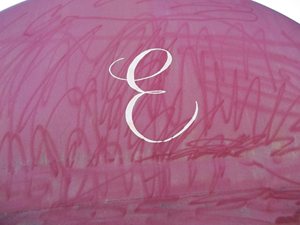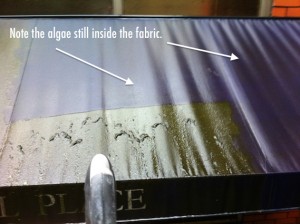 Avoid the most common mistake in awning cleaning and protect your investment.
Avoid the most common mistake in awning cleaning and protect your investment.
Awnings are a great addition to a home or business, they help control levels of light and sun exposure which keeps your home cooler, save on energy costs, and create a space for outdoor enjoyment protected from the elements. As they are on the outside of the home, they are susceptible over time to the elements, and require specific cleaning methods.
DON’T
As tempting as it may seem on youtube, avoid using a pressure washer on your awning if at all possible. On most commercially available pressure washers there is no gauge to indicate what pressure is being produced, leaving it up to the “feel” of the worker. The margin for error in using too high a pressure is too high. Imagine if our cars didn’t have speedometers and instead we had to “feel” how fast we were going, you would end up with a wide variety of travelling speeds. This alone makes the process inconsistent and unable to safety, and predictably duplicate the same result.
 Working a pressure washer from a ladder creates many challenges. Some awnings are quite deep, up to 10’ or more from the building to the leading edge. The nozzle of the pressure washer needs to be at a very specific angle to effectively clean, once the angle becomes to steep (caused by reaching out), less of the fan-pattern of the spray is in contact with the awning and can easily lead to scarring, or the embedding of a pattern into the material.
Working a pressure washer from a ladder creates many challenges. Some awnings are quite deep, up to 10’ or more from the building to the leading edge. The nozzle of the pressure washer needs to be at a very specific angle to effectively clean, once the angle becomes to steep (caused by reaching out), less of the fan-pattern of the spray is in contact with the awning and can easily lead to scarring, or the embedding of a pattern into the material.
When the awning is wet, it looks clean. When fabric is wet it appears darker and hides many imperfections in cleaning technique. Once the fabric is dry, technique is revealed. Visible spray patterns are a result of working too fast and using improper cleaning techniques.
 DO
DO
Use soft-clean techniques. As awnings age, the material can become thin and/or brittle, jumping straight into the harshest and strongest cleaning technique can tear and damage the awning. Use only manufacturer-approved cleaning products and old-fashioned elbow grease to gently remove dirt and algae. Apply a cleaning soap with a soft bristle brush and allow the soap to sit on the awning for a few minutes to penetrate. For deep algae penetration, especially on fabric awnings it may be necessary to clean both sides of the awning. Rinse with a garden hose and repeat as necessary. Following the full cleaning of the awning surface, apply a protective top coat to protect the awning from fading and to restore its original lustre.
While the allure of a speedy result is appealing, pressure washing awnings simply has too many opportunities for errors. Following the soft-clean method you can expect a consistent result and enjoy your awning for many years to come.